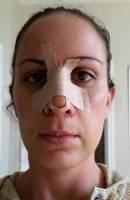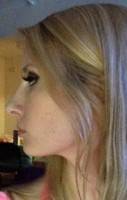Rhinoplasty cases and techniques
Modern rhinoplasty techniques
Packing is definitely no longer recommended. It’s uncomfortable and tends to promote bacterial growth. In terms of breaking the nasal bones, current techniques make a small “cut” in the bones allowing the bones to be repositioned and reset.
Cutting, shaping and removing cartilage is still a common part of rhinoplasty surgery. However, techniques have become much more conservative in the past decade to maintain nasal structure and support over time. (Stephen Weber, MD, FACS, Denver Facial Plastic Surgeon)
Nasal bones are still repositioned if necessary, cartilage can be trimmed as well, and packing can be useful in rare circumstances. Find a board certified plastic surgeon who performs hundreds of rhinoplasties and rhinoplasty revisions each year.
Then look at the plastic surgeon’s website before and after photo galleries to get a sense of who can deliver the results. (Kenneth B. Hughes, MD, Los Angeles Plastic Surgeon)
That have been subtle improvements in techniques in rhinoplasty over the years but in order to make a nose smaller one generally needs to remove and or rearranging tissue and that means fracturing and cutting bones and cartilage in many instances. (Frederic H. Corbin, MD, Brea Plastic Surgeon)
Rhinoplasty techniques and cases
Cutting and shaping cartilage as well as breaking nasal bones is still the standard practice in Rhinoplasty. I’m surprised that the doctor’s website would say this if he/she is a Board Certified Plastic Surgeon or Facial Plastic Surgeon.
Instead of packing though, I use splints that have a hole in them to help patients breathe and the splints come out very easily instead of getting stuck in the nose. Of course, everyone’s anatomy is different so not everyone needs to have their nose broken or cartilage cut. The best thing to do is go to a trained doctor for a consultation to develop a customized plan to fit your anatomy. (Catherine Huang-Begovic, MD, Beverly Hills Plastic Surgeon)
Rhinoplasty has not undergone a change of not breaking bones or cutting cartilage.
Rhinoplasty has not undergone a change of not breaking bones or cutting cartilage. I do not know why someone would say this since the only way to narrow nasal bones is to fracture them. Cartilage is cut to refine the tip and make changes in the septum. See a very experienced rhinoplasty surgeon for the best result. (Toby Mayer, MD, Beverly Hills Facial Plastic Surgeon)
I saw a doctors website that said, “breaking nose bones, and cutting cartilage and packing is antiquated.” Is that true?
Nasal bones are never broken, but they are cut precisely if necessary for a wide nose. Much less cartilage is removed these days as surgeons have learned to shape the existing cartlage. Packing has become a rarity. (Ronald V. DeMars, MD, Portland Plastic Surgeon)
Osteotomy vs no osteotomy, packing vs no packing, reality vs puffery rhinoplasty techniques
If the nasal bones are wide, most patients will require an osteotomy. I suppose you could perform the procedure without it, but the nose would still be wide. There are techniques that minimize swelling and bruising, but nobody can guarantee there won’t be either of those.
Many doctors no longer use the gauze packing; rather, a silastic stent does the trick and allows patients to move air at the same time. Some doctors who are not qualified to do surgery like to put lots of filler into the nose to improve its shape, and call it a no-recovery rhinoplasty, as if this were a substitute for reshaping the nose.
Perhaps this is what the doctor is advertising. (Brent Moelleken, MD, Beverly Hills Plastic Surgeon)
Non Surgical Rhinoplasty?
No, there is not that much change in rhinoplasty. There are no creams, pills, or magic wands that will make a nose look better.
There may be injections that may temporarily help the aesthetics of the nose but most fillers are short lived and unpredictable. Consult a Board Certified Plastic Surgery. (George C. Peck, Jr, MD, West Orange Plastic Surgeon)


